Last updated on May 25th, 2023
Whales are the largest animals on Earth and they live in every ocean. Whales are classified into two types: baleen and toothed.
Baleen whales (also called toothless whales) are larger in size as compared to toothed whales. Baleen whales include the blue whale, humpback whale, bowhead whale, gray whale, sei whale, fin whale and others.
Toothed whales, have teeth, which are used to hunt and eat squid, fish, and seals. These whales include the killer whale, narwhal, beluga whale and sperm whale.
With these 60 interesting facts about whales, we will learn more about their anatomy, communication, intelligence, life cycle, eating habits, comparison with humans, and information about different types of whales.
The body shape of baleen whales is roughly cylindrical but it tapers at both ends. This body shape helps the whale swim efficiently. Baleen whales have baleen that are essentially plates of keratin that grow down from the gums of the upper jaw.
The sperm whale is the largest toothed predator on earth. The sperm whale also has the ability to stay underwater for up to 90 minutes.
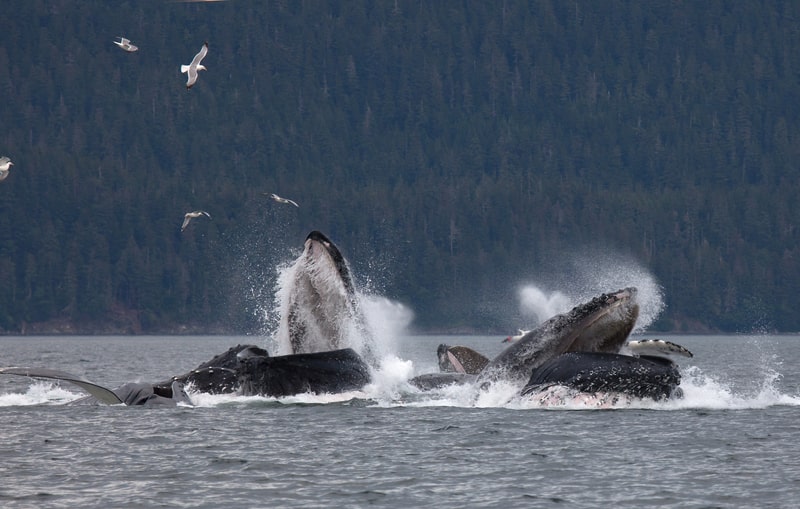
Wondering how whales are able to stay underwater for such a long period?
The answer lies in Myoglobin. Myoglobin is a protein which is present in the muscles of most mammals and its primary job is to help the mammal store excess oxygen.
Because whales have more myoglobin than other land mammals, they can store more oxygen and use it when they stay submerged in water for longer durations.
Did you know how whales propel such a huge amount of weight in water and swim for hours?
They generally have four fins. Two of these are pectoral and the other are a caudal fin and a dorsal fin. The pectoral fins serve as the arms. While swimming, whales wave their tails up and down instead of the left-to-right movement that is used by fish and sharks.
Next to the blue whale, the fin whale is the second largest mammal in the world.
Whale facts about anatomy and adaptations
1. Whales are Not Fish
Whales are marine mammals, not fish! These warm-blooded creatures breathe air and grow body hair. Instead of eggs, they give birth to live babies and produce milk.
2. Relatives of Hippos
They sure look different, but whales are closer to hippos than any other animal. They evolved from a common four-legged ancestor that lived around 50 million years ago.

3. Giant Ancient Whales
Giant fossils originally thought to be dinosaurs turned out to be ancient whales. The “Basilosaurus” is longer than modern whales, with small back legs and nostrils near the snout.
4. Adapted Breathing
As whales evolved, their nostrils gradually moved up to make surface breathing easier. They expel stale air through this blowhole on the top of their head, then inhale about 5,000 liters of fresh air into their lungs.
5. Flippers with Fingers
Whale anatomy is filled with clues about its land origins. If you examine their paddle-shaped flippers using X-ray, you will see bones that resemble a hand with long fingers.
6. Pelvic Bones
Whale embryos are known to have tiny back legs, but these disappear before they are born. Some whales even have free-floating pelvic bones even if they haven’t needed these for millions of years.
7. Whale Vision
Whale eyes may be small relative to their body size, but they have good vision even in dim light. These are on the sides of their head for a better view of their surroundings.
8. Blubber Use
Whales don’t mind cold waters. Their thick fatty insulation called blubber keeps them warm. It also helps their heavy bodies float and gives them energy when fasting.

9. Earwax Age
To know the age of a blue whale, check the earwax. A new layer forms every 6 months to protect the ear canal. Count these layers just like the rings of a tree.
10. Whales vs Dinosaurs
Whales are bigger than dinosaurs. The growth of land animals is limited by gravity: their bones must support their weight. Water eases this limitation, enabling the fantastic size of whales.
Whale facts about communication and intelligence
11. Mimicking Human Speech
Captive whales may sometimes mimic human speech, showing just how badly they want to communicate. After all, their vocal mechanism is different, so imitation takes a lot of effort.
12. Whale Sounds
Whales produce two signals: clicks and whistles. Quick-pulsed clicks are useful in locating objects like a built-in sonar system. Meanwhile, high-pitched whistles are handy for communication with other whales.

13. Best Whale Singers
Male humpback whales are underwater balladeers. They are known to sing beautiful and complex songs that may last up to half an hour. With a 7-octave range, they can hit almost every note on a piano.
14. Simplest Songs
Unlike humpbacks, fin whales like to keep it simple. Their mating songs are repetitive yet powerful with heavy bass and a sprinkle of high notes.
15. Low and Loud
At 186 decibels, blue whales can sing as frighteningly loud as a launching rocket. Their voices are loud and deep. They produce different songs throughout the year based on activity: feeding, breeding, and migrating.
16. Widest Repertoire
None come close to the bowhead whales when it comes to creativity and diversity. They even improvise like jazz musicians. When polar winter comes, they fill the darkness with songs.
17. Non-verbal Communication
By slapping the water surface with their tail, whales are warning others not to mess with them. It’s also a trick to scare schools of fish and make them easier to hunt.

18. Playing with Bubble Rings
Small whales love to play, like making bubble rings in the water. They can do this by swimming in a circle and puffing air. They might even bite the ring to burst the bubble.
19. Whale Sailing
Large whales are not as active, but they have their own games like “sailing”. They elevate their tail above the water like a sail and try to hold the position for as long as possible.
20. Sleeping
Whales might drown if they fall asleep for too long. Since they need to be conscious to breathe, one side of their brain remains active while the other side sleeps.
Life Cycle
21. Whale Names
Adult female whales are called cows, babies are calves, and adult males are bulls. Mothers give birth to a calf which they raise single-handedly for years, or even decades.
22. Tail-first Birth
Whales are often born tail-first at sea. This method of delivery prevents them from drowning in the water in the case of extended births.

23. Thick Milk
Mothers squirt milk into the mouths of their calf. The milk is so high in fat that it has the consistency of toothpaste. This helps them develop blubber fast.
24. Pregnancy
The gestation period of most whales typically last for about 12 months. This could go up to 18 months in the case of sperm whales. They tend to get pregnant every 2-3 years.
25. Dependency
Before birth, baby whales get nutrients from their umbilical cord. That’s why they have a belly button like humans. After birth, they depend on their mother’s milk for about a year until they can hunt independently.
26. Maturity
Depending on the species, whales may take 5 to 20 years to reach maturity. They mate with different partners but give birth to only one baby each time.
27. Mating
Mating rituals vary. Among right whales, up to 20 males may compete for female attention through gentle courtship. Meanwhile, humpback males will fight and sustain battle scars to get noticed.
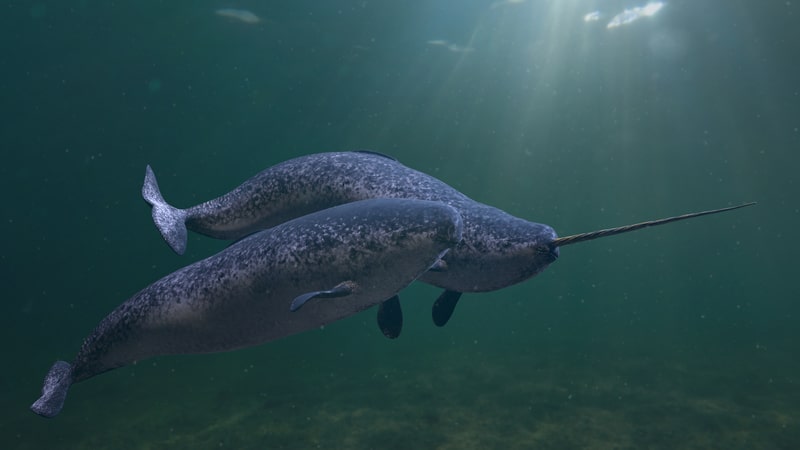
28. Migration to the Tropics
Adult whales spend most of their time in the polar regions, but their babies can’t tolerate extreme cold. That’s why they migrate to warmer regions to mate and give birth.
29. Fasting While Breeding
Whale mothers don’t eat while nursing their calf. In fact, blue whales can lose up to 25% of their weight. They will go back to the polar regions to feed when their baby is ready with thicker blubber.
30. Locomotion
When it’s time to move, whales rely on their tail fins to propel them forward as their body goes up and down. Meanwhile, their flippers are constantly in motion, steering them wherever they want to go.
Whale facts about their eating habits
31. Toothed Whales
Toothed whales, such as orcas and sperm whales, may use their teeth to grab food like fish, squid, and seals. Narwhals use their long horn-tooth to taste the waters.
32. No Chewing
Toothed whales may have front teeth, but they don’t have molars. That’s why they can’t chew food. They just swallow their prey whole or in big chunks, and let their stomach do the work.
33. Baleen Whales
Some whales have baleen instead of teeth. These are flexible overlapping plates made of keratin, the same substance in our hair and fingernails. Baleen strains out sea water while leaving prey in their mouths.
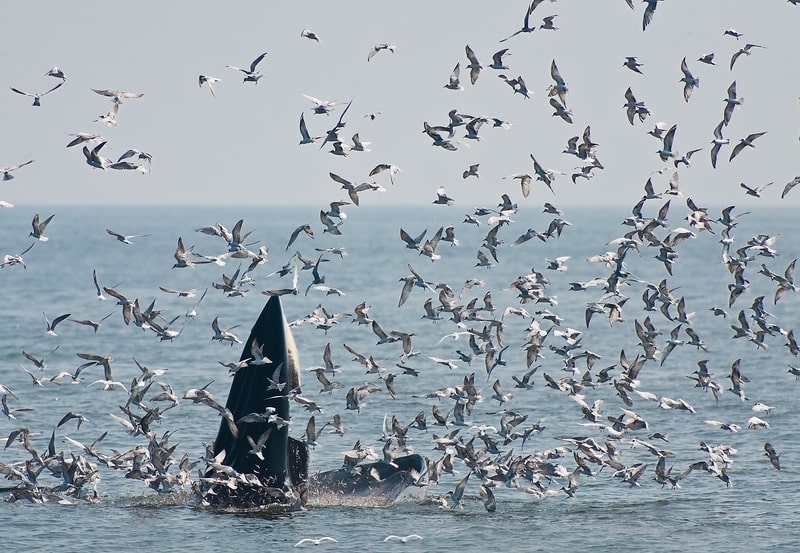
34. Skimmers
Skimmers, such as the North Atlantic right whales, swim through plankton with open mouths to feed. Their baleen traps plankton as they move through the waters.
35. Gulpers
Rorqual whales, like the blue whale and the humpback whale, have pleats running from their belly button to their lower jaw. They can fill this with sea water, clamp their upper jaw down, and force water out the baleen to keep the fish.
36. Suckers
Gray whales are classified as suckers because they pull in amphipods, like shrimps and scuds, from the bottom of the ocean. They need to take in mouthfuls of mud and water before they can filter their precious food.
37. Mustached Whales
Baleen plates have a hairy fringe. This inspired the alternate scientific name for these animals: “Mystacoceti”, which means “mustached whale” in Greek.
38. Multiple Stomachs
Most whales have 3 to 4 stomachs in their belly. Some outliers have more, such as Baird’s whale with an astonishing 13 stomachs. These make it easier to digest high volumes of food.
39. Speed
Whales can swim fast despite their large size. Fin whales and sperm whales can both approach a top speed of 36kph. Seals can only swim up to 28kph, making them ideal prey.
40. Fused Neck
Whales can’t turn their heads. They would have to turn their entire body. That’s because of their fused neck vertebrae. Although they lost flexibility, they gained stability when swimming at high speeds to get food.
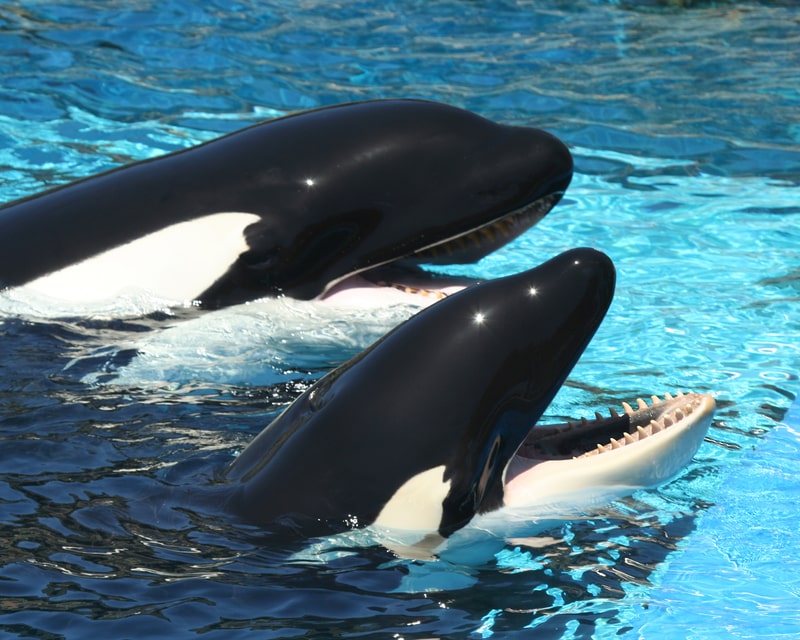
Whale Records
41. Heaviest Brain
Sperm whales have the heaviest brain on earth at 9 kilograms. That’s six times heavier than a human brain. However, it is only 0.02% of the creature’s body weight.
42. Largest Animal Ever
Blue whales are the largest animals to ever exist. They can grow up to 33.58 meters — much longer than a basketball court! At 199 metric tons, one blue whale weighs as much as 28 African bush elephants.
43. Longest-living Mammal
Thanks to amino acid dating, a bowhead whale was confirmed to be at least 211 years old. New genetic research even suggest that these whales can live up to 268 years.
44. Longest Whale Tooth
Washed-up spiral “tusk” from dead narwhales is often mistaken for unicorn horn. The truth is that this is a long canine tooth protruding from its lips. It can exceed 3m and weigh up to 10kg.
45. Slowest Heartbeat in Mammals
The blue whale once again reigns supreme. Its heart only beats 4 to 8 times per minute depending on activity. That is due to its large efficient heart that weighs 200kg and measures 1.5m.
46. Thickest Blubber
A native of the Arctic, bowhead whales develop a layer of fat just under the skin that is 40 to 50 cm thick, eclipsing that of any other whale. This blubber regulates their body temperature and stores energy.
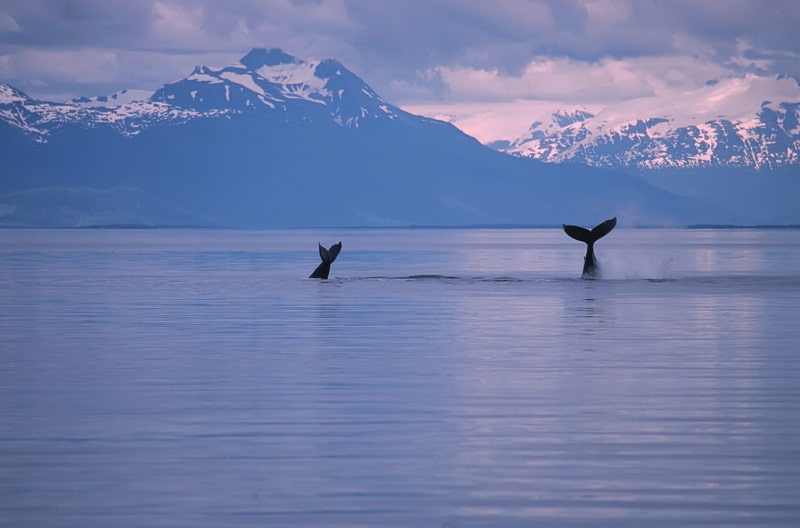
47. Deepest Dive by a Mammal
Intense pressure makes deep diving difficult, but a Cuvier’s beaked whale shrugged it off and went down 2,992 meters. Marine scientists recorded the feat in 2013 off the coast of Southern California.
48. Longest Mammal Migration
The humpback whales can travel long distances between different breeding grounds. However, it has also been observed that it is the male humpback whale that travels distance in excess of 10,000 kms and not their female counterparts. One male humpback whale was spotted in both the Indian and South Atlantic ocean.
49. Largest Animal-made Fishing Nets
Humpback whales are team players. They may work together to trap fish. Groups form a circle around their prey and make bubble nets with their blow holes before swarming in at the same time.
50. Biggest-selling Nature Album
“Songs of the Humpback Whale” was released in 1970 and sold 125,000 copies worldwide. It was produced by bioacoustics expert Roger Payne. The album kickstarted the whale conservation movement.

Whales and Humans
51. Korean Petroglyphs
Stone Age inhabitants of South Korea drew petroglyphs of about 100 whales on a cliff face. It shows how dependent these people were on these creatures for survival.
52. Vietnam Whale Funeral
Ancient Vietnamese seafarers see whales as divinity. The respect for these animals is so deep in their culture that they sometimes hold funerals to honor beached whales.
53. Chinese Sea God
According to Chinese folklore, the god of the seas is depicted as a large whale that has human limbs.
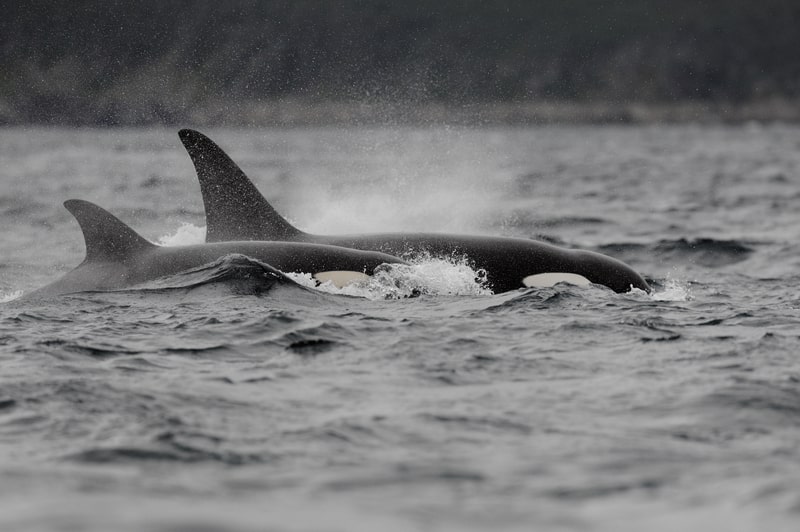
54. Jonah in a Whale
In a memorable bible story, Jonah is a prophet who was swallowed by a whale after disobeying God. He stays in its belly for three days and prays for forgiveness.
55. The Leviathan
The Bible also describes a fearsome mythological sea creature called the Leviathan. Older scholars thought it was a large crocodile, but modern interpretations peg it as a great whale.
. . . continue reading on the next page
